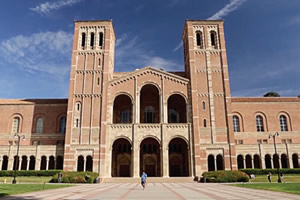UCLA Reduces Energy Use

UCLA has achieved a 35 percent savings in their overall electrical lighting load after retofitting Audacy’s lighting control devices into existing infrastructure.
As one of the world's leading universities, the University of California, Los Angeles (UCLA) is committed to environmental responsibility and sustainability. Part of that commitment is ensuring that all energy is used wisely.
Kevin Borg is UCLA’s assistant athletic director for facilities and project management. He is charged with driving maximum performance from each facility across the school’s intercollegiate programs. Borg also is accountable for stewarding the budget needed to build and run each facility in an increasingly demanding economic and regulatory environment.
California’s tough new Title 24 regulations demand that organizations with largescale buildings, campuses, and facilities networks prove they are reducing energy usage across their operations each year. The Energy Information Administration reports that lighting can be up to 40 percent of an organization’s energy bill each year—a statistic that rings true with Borg.
After easily retrofitting Audacy’s wireless devices into existing light fixtures and infrastructure, UCLA used simple occupancy/vacancy, task tuning, and dimming approaches to achieve a 35 percent savings in their overall electrical lighting load. The Audacy system provides the UCLA facilities managers the ability to manage, monitor, and adjust their organization’s lighting system from a laptop, tablet, or smartphone from anywhere in the world.
Over the 12-month test period, Borg and his team consistently delivered at least a 35 percent reduction in total energy usage “just by delivering the right amount of light to the right room at the right time.” Borg explains, “The most efficient light is one that is off. So, we’re now set up to automatically program lights to turn off when a room isn’t being used.”
“It’s a game-changer,” says Borg. “The Audacy system allows us to optimize both our lighting and energy usage from building to building. It’s simple. Intuitive. Effective.”
www.audacywireless.com